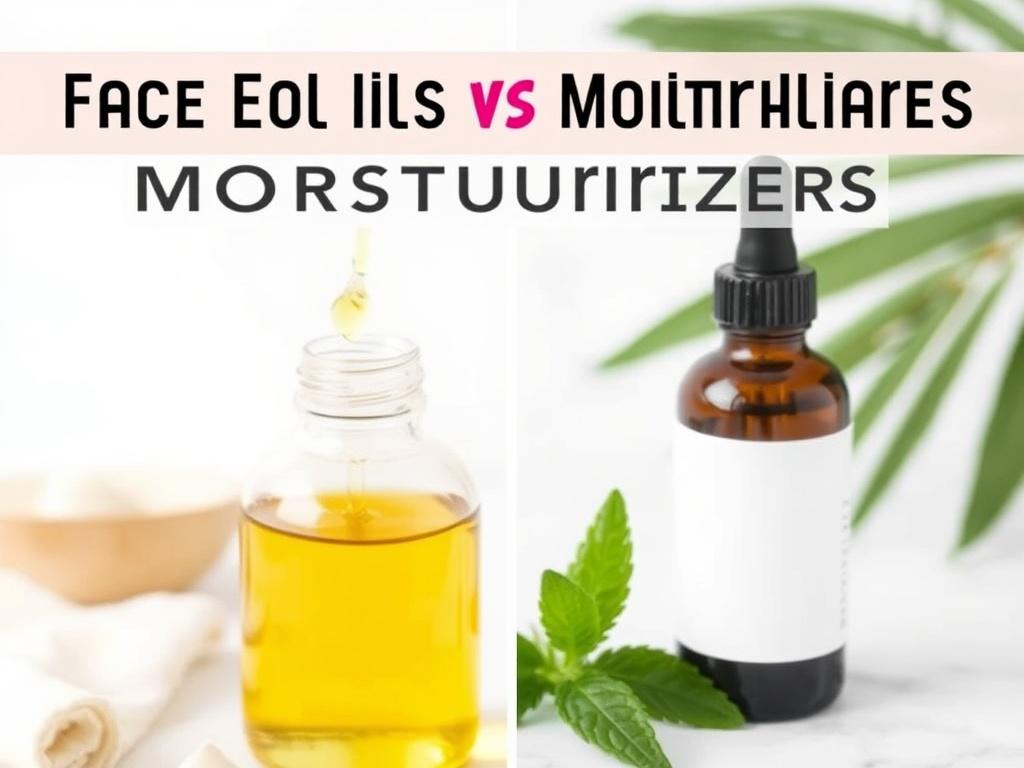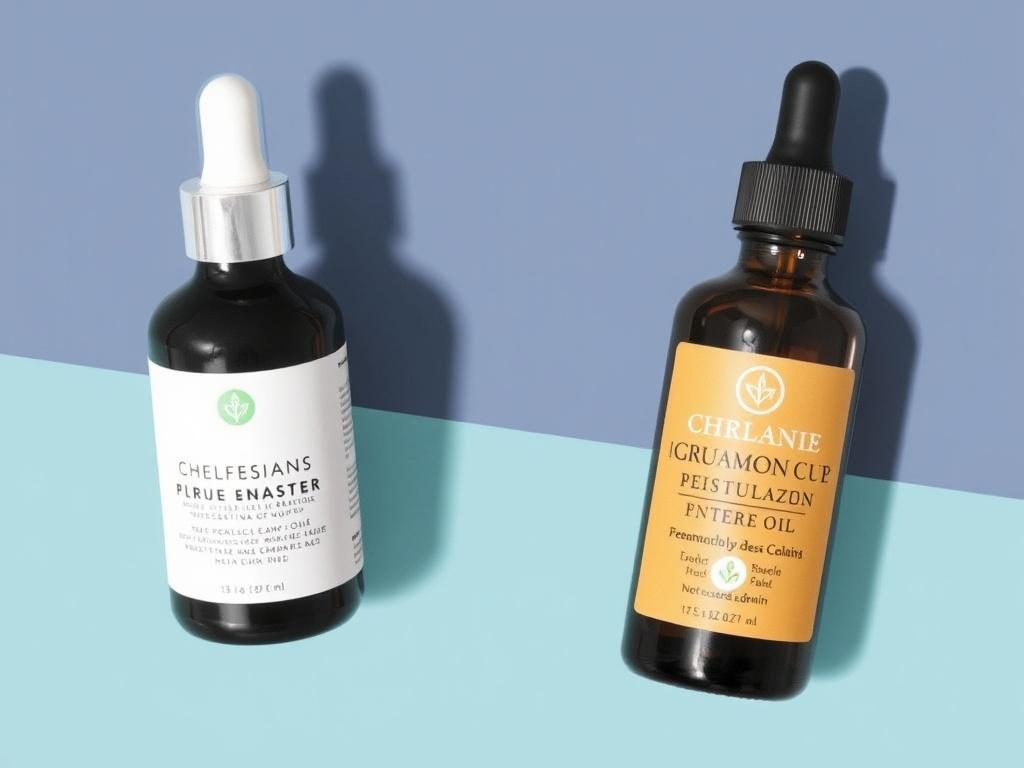Содержание статьи
- 1 What Are Face Oils?
- 2 What Are Moisturizers?
- 3 The Key Differences Between Face Oils and Moisturizers
- 4 Do You Need Both Face Oils and Moisturizers?
- 5 Popular Face Oils and Their Benefits
- 6 Choosing the Right Moisturizer for Your Skin
- 7 Common Misconceptions About Face Oils and Moisturizers
- 8 How to Incorporate Face Oils and Moisturizers into Your Routine
- 9 Environmental and Lifestyle Factors Affecting Your Choice
- 10 DIY Face Oils and Moisturizers: Are They Worth It?
- 11 Face Oils and Moisturizers: Final Thoughts on Shopping Tips
When it comes to skincare, the array of products available can be overwhelming. Among the most common and sometimes confusing choices are face oils and moisturizers. If you’ve ever found yourself wondering, “Do I really need both face oils and moisturizers?” you’re not alone. This article dives deep into the world of face oils and moisturizers to help you understand the differences, benefits, and how to determine what your skin really needs. Whether you have dry, oily, or combination skin, this guide will clarify these essential skincare products in a simple and engaging way.
What Are Face Oils?
Face oils are products made primarily of plant-based oils extracted from seeds, nuts, or fruits. These oils are packed full of vitamins, antioxidants, and essential fatty acids, which are great for supporting healthy skin. Unlike heavy oils that can clog pores, many face oils are lightweight and absorb quickly, providing a boost of nourishment that regular moisturizers might not deliver.
People often associate oils with oily skin, but that’s a common misconception. Face oils can actually help balance oil production by signaling to your skin to produce less, which is why they are used by those with oily or acne-prone skin too. From rosehip oil to jojoba oil and argan oil, the options are vast and cater to different skin concerns such as dryness, redness, or aging.
What Are Moisturizers?
Moisturizers, on the other hand, are formulated to hydrate the skin by locking in water and creating a barrier against environmental aggressors. They often contain humectants (like glycerin or hyaluronic acid) that draw moisture into the skin, emollients that soften the skin, and occlusives that prevent water loss. Moisturizers come in various forms: creams, lotions, gels, and balms, to suit different skin types and climates.
Unlike face oils, moisturizers are typically the cornerstone of most skincare routines because maintaining hydration is key to healthy skin. They help maintain your skin’s softness, smoothness, and elasticity.
The Key Differences Between Face Oils and Moisturizers
Understanding the differences can help you make informed decisions about your skincare routine. Here’s a concise table highlighting their primary distinctions:
| Feature | Face Oils | Moisturizers |
|---|---|---|
| Main Purpose | Provide nourishment, antioxidants, and essential fatty acids | Hydrate skin by locking in moisture |
| Primary Ingredients | Natural oils (e.g., jojoba, argan, rosehip) | Humectants, emollients, and occlusives |
| Texture | Often lightweight, sometimes richer but absorbs quickly | Varies from light gels to rich creams |
| Skin Types Best For | All types, including oily skin (depending on the oil) | Depends on formulation; different options for dry, oily, sensitive |
| How It Works | Nourishes and balances oil production | Hydrates and creates a moisture barrier |
Do You Need Both Face Oils and Moisturizers?

This is the million-dollar question. The answer is: it depends on your skin type, concerns, and lifestyle. Let’s look at different scenarios to see how these products can work alone or together.
Combination Use: A Match Made in Skincare Heaven?
Many skincare enthusiasts swear by using both a face oil and a moisturizer in their regimes. This combination leverages the hydration power of moisturizers with the nourishing benefits of oils. Typically, moisturizers should be applied first to lock in hydration, and face oils come afterward to seal everything together and add extra nutrients.
Using them together can calm redness, fight dryness, and even out skin tone, especially if you choose oils with anti-inflammatory or antioxidant properties like calendula or rosehip oil. They can also add a lovely glow and reduce the appearance of fine lines.
When a Moisturizer Alone Is Enough
If you have oily or acne-prone skin, you might find that a lightweight moisturizer provides sufficient hydration without feeling greasy. Many moisturizers now have non-comedogenic (won’t clog pores) formulas optimized for oily skin. Choosing a gel-based or water-based moisturizer may give your skin the moisture it needs to reduce excess oil production.
The Role of Face Oils for Dry or Mature Skin
Dry and mature skin types can benefit greatly from face oils because these oils help replenish the skin’s lipid barrier, which locks in moisture and prevents further dryness. In colder months or dry climates, face oils are especially helpful to protect and nourish skin that tends to feel tight or flaky despite moisturizing.
How to Layer Face Oils and Moisturizers
Timing and layering are important to get the best results from your skincare routine. Here is a simple step-by-step guide on how to layer these products effectively:
- Cleanse your face to remove dirt and impurities.
- Apply toner or essence if you use one to prep your skin.
- Use a serum that targets specific concerns like acne or aging.
- Apply your moisturizer to hydrate and lock in water.
- Finish with face oil to seal in hydration and add nourishment.
This order allows the lighter, water-based products to absorb before heavier oils are sealed on top. However, if you have oily skin, you might want to use face oils on alternate days or only at night.
Popular Face Oils and Their Benefits
Because there are many types of face oils, it’s useful to know which ones target your specific skin concerns. Here is a handy list of popular face oils and their key benefits:
- Jojoba Oil: Closely mimics skin’s natural oils, great for all skin types.
- Rosehip Oil: High in vitamin C and essential fatty acids, great for brightening and anti-aging.
- Argan Oil: Rich in antioxidants, helps soothe and hydrate dry skin.
- Marula Oil: Lightweight and absorbs quickly, excellent for reducing redness and improving skin elasticity.
- Tea Tree Oil: Has antibacterial properties, commonly used for acne-prone skin (usually diluted).
- Camellia Oil: Contains vitamins A, B, D and E, great for softening and smoothing.
Choosing the Right Moisturizer for Your Skin
Just as important as picking the right face oil is choosing an appropriate moisturizer tailored to your skin type and concerns.
| Skin Type | Recommended Moisturizer Type | Key Ingredients |
|---|---|---|
| Dry Skin | Thick creams or balms | Hyaluronic acid, ceramides, shea butter, glycerin |
| Oily Skin | Lightweight lotions or gel moisturizers | Salicylic acid, niacinamide, hyaluronic acid |
| Combination Skin | Balancing or gel-cream hybrids | Glycerin, squalane, lightweight oils |
| Sensitive Skin | Fragrance-free, calming formulas | Aloe vera, ceramides, chamomile, colloidal oatmeal |
Reading labels and understanding what each moisturizer offers helps prevent skin irritation and addresses your skin’s unique needs.
Common Misconceptions About Face Oils and Moisturizers
Let’s clear up some myths that might have held you back from trying either face oils or moisturizers.
- Myth: Oils cause acne and clog pores. Many face oils are non-comedogenic and can actually help regulate oil production.
- Myth: Moisturizers are greasy. There are many lightweight, fast-absorbing formulations ideal for all skin types.
- Myth: If you use face oil, you don’t need a moisturizer. Face oils nourish, but moisturizers provide hydration; often both complement each other.
- Myth: Only dry skin benefits from oils. Oils like jojoba or grapeseed are excellent for oily or combination skin as well.
Understanding these facts can help you choose effective products confidently.
How to Incorporate Face Oils and Moisturizers into Your Routine
If you’re new to using either product or wondering how to start a balanced routine, here are some beginner-friendly tips.
- Start simple: Choose a gentle moisturizer suitable for your skin type to establish basic hydration.
- Patch test face oils: Apply a small amount to your forearm to check for reactions.
- Alternate days: Try using face oil every other day at night to see how your skin responds.
- Modify seasonally: Use richer creams and oils in winter, lighter products in summer.
- Consult a dermatologist: Especially if you have sensitive or problematic skin.
With a little experimentation and observation, you can tailor a skincare routine that makes your skin glow naturally.
Environmental and Lifestyle Factors Affecting Your Choice
Don’t forget the impact of your environment and lifestyle on your skincare needs. Dry climates, pollution, stress, diet, and sleep all play roles in your skin’s health.
If you live in a harsh climate or often spend time outdoors, face oils with antioxidant properties can offer extra protection. On the other hand, in humid climates, lightweight moisturizers might be preferred to avoid shine and sweatiness.
Lifestyle habits like drinking enough water, eating a balanced diet rich in omega-3 fatty acids, and managing stress complement your topical skincare by promoting healthy skin from the inside out.
DIY Face Oils and Moisturizers: Are They Worth It?

For some, making homemade face oils or moisturizers with natural ingredients is appealing. You can mix oils like jojoba with essential oils (properly diluted) for customized blends. Moisturizers, however, require precise formulations to ensure safety, pH balance, and stability.
While DIY oils can be affordable and enjoyable to create, be cautious of sensitivity, contamination, and allergies. Always research ingredients and prioritize your skin’s health.
Face Oils and Moisturizers: Final Thoughts on Shopping Tips

When shopping for face oils and moisturizers, keep these practical tips in mind:
- Check ingredient lists: Look for beneficial components and avoid irritants like alcohol, parabens, and synthetic fragrances if sensitive.
- Choose reputable brands: Products with transparent sourcing and good reviews are usually more trustworthy.
- Consider packaging: Dark glass bottles protect oils from light degradation.
- Start small: Buy mini sizes to test reactions before committing to full bottles.
Being an informed shopper means you save money and find products that really work for your skin.
Conclusion
Face oils and moisturizers each serve unique, vital functions in skincare. Moisturizers primarily hydrate and form a protective barrier to retain moisture, while face oils nourish, balance, and support the skin’s natural lipid layer. Whether you need both depends on your skin type, concerns, and preferences. For many, using a moisturizer and layering a face oil can provide optimal skin health, enhancing hydration and delivering nutrients for a radiant complexion. For others, especially those with oily or sensitive skin, a thoughtfully chosen moisturizer alone may suffice. The key is understanding your skin’s needs, learning how these products function, and experimenting responsibly. With the right combination, your skincare routine can be simple, effective, and truly enjoyable.

